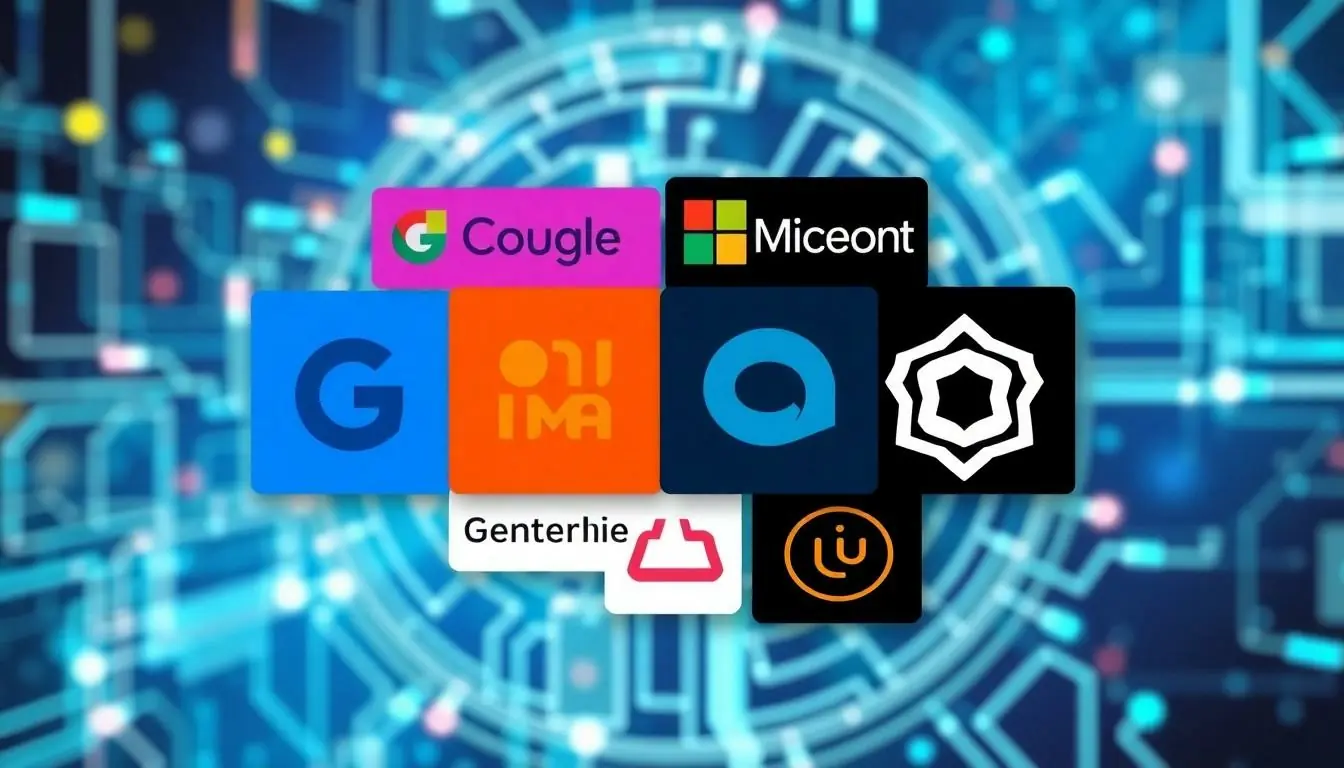Table of Contents
ToggleIn the ever-evolving world of AI, ChatGPT has taken center stage, dazzling users with its conversational prowess. But wait! Just like every superhero needs a nemesis, ChatGPT has its fair share of competitors vying for the crown. Who’s ready to step into the ring and challenge the reigning champ?
Overview of ChatGPT
ChatGPT stands out in the artificial intelligence landscape due to its advanced natural language processing capabilities. Users experience a seamless interaction that mimics human conversation. Developed by OpenAI, ChatGPT utilizes deep learning techniques to generate coherent responses quickly. Its architecture is based on the Generative Pre-trained Transformer model, which enhances its conversational dynamics.
High versatility marks ChatGPT, enabling applications across various fields such as customer service, education, and content creation. This adaptability attracts organizations seeking to implement AI solutions effectively. Engaging with ChatGPT offers users tailored experiences, enhancing user satisfaction.
Continuous improvement characterizes ChatGPT, with regular updates introducing new features and refining existing functionalities. The model benefits from feedback loops, ensuring the incorporation of user insights and experiences into its development. These enhancements contribute to maintaining its competitive edge in the AI market.
Data from current trends indicates ChatGPT holds a significant share of the AI conversational tool market. Its user base expands steadily, driven by growing interest in AI applications. By addressing evolving user needs and preferences, ChatGPT retains a prominent position in the field.
While ChatGPT excels, competition continues to emerge. Rivals challenge its dominance by introducing innovative technologies and unique features. Companies strive to develop AI models that not only match but also exceed ChatGPT’s capabilities, intensifying the competition in this rapidly evolving sector.
Key Competitors in the AI Chatbot Space

Several notable competitors challenge ChatGPT’s dominance in the AI chatbot market. Each player brings unique features, showcasing advanced technologies that push the boundaries of conversational AI.
Competitor 1: Google Bard
Google Bard leverages Google’s vast data ecosystem to deliver efficient and context-aware responses. Its integration with Google Search enhances its capability to provide real-time information. Stunning performance in understanding various queries makes it a formidable contender. Utilization of transformer-based architecture enables Bard to optimize language understanding, allowing for richer interactions with users.
Competitor 2: Microsoft Copilot
Microsoft Copilot integrates seamlessly with Microsoft 365 applications, enhancing productivity through AI-driven suggestions. The tool utilizes natural language processing to assist users in drafting content and generating ideas. Its accessibility across popular software enhances its appeal in workplace environments. Continuous updates and innovations aim to refine its functionality, thus cementing its status as a significant competitor.
Competitor 3: Anthropic’s Claude
Anthropic’s Claude positions itself as a reliable alternative by prioritizing safety and ethical considerations in AI. Claude is designed to engage in human-like conversations while minimizing harmful outputs. Notable for its transparent training data methods, it fosters trust with users. The focus on ethical AI development addresses growing concerns around safety and bias in machine learning systems.
Competitor 4: Meta’s LLaMA
Meta’s LLaMA offers a robust language model aimed at pushing AI research boundaries. This model emphasizes efficiency, serving as a versatile foundation for various applications. With a commitment to open research, LLaMA encourages collaboration among developers. Its capability to adapt to diverse industries positions it as a strong challenger in the chatbot landscape.
Strengths and Weaknesses of Competitors
Competitors in the AI chatbot market showcase various strengths that enhance their appeal.
Strengths of Each Competitor
Google Bard excels with its vast data ecosystem, providing context-aware responses. Microsoft Copilot integrates seamlessly with Microsoft 365, boosting user productivity. Claude by Anthropic emphasizes safety, promoting ethical use of AI through transparent training methods. Meta’s LLaMA stands out with its commitment to efficiency and open research, making it adaptable for multiple applications. Each competitor leverages unique strengths to cater to specific user needs and preferences.
Weaknesses of Each Competitor
Google Bard may struggle with conversational depth compared to ChatGPT, limiting nuanced interactions. Microsoft Copilot’s reliance on Microsoft 365 can hinder users not within its ecosystem. Claude faces challenges in balancing safety and performance, risking slower responses during cautious filtering. LLaMA’s focus on open research may delay practical applications as results require extensive validation. Understanding these weaknesses allows users to make informed choices, acknowledging limitations alongside strengths.
The competitive landscape of AI chatbots is evolving rapidly with several key players challenging ChatGPT’s market position. Each competitor brings unique strengths to the table which can cater to specific user needs. As organizations seek innovative solutions for conversational AI, understanding these alternatives becomes crucial.
While ChatGPT continues to lead with its advanced capabilities and user-friendly design, the emergence of rivals like Google Bard and Microsoft Copilot indicates that the race is far from over. Users should stay informed about these developments to choose the best AI tools that align with their goals. The future of conversational AI promises exciting advancements as competition drives innovation and improvement across the board.








